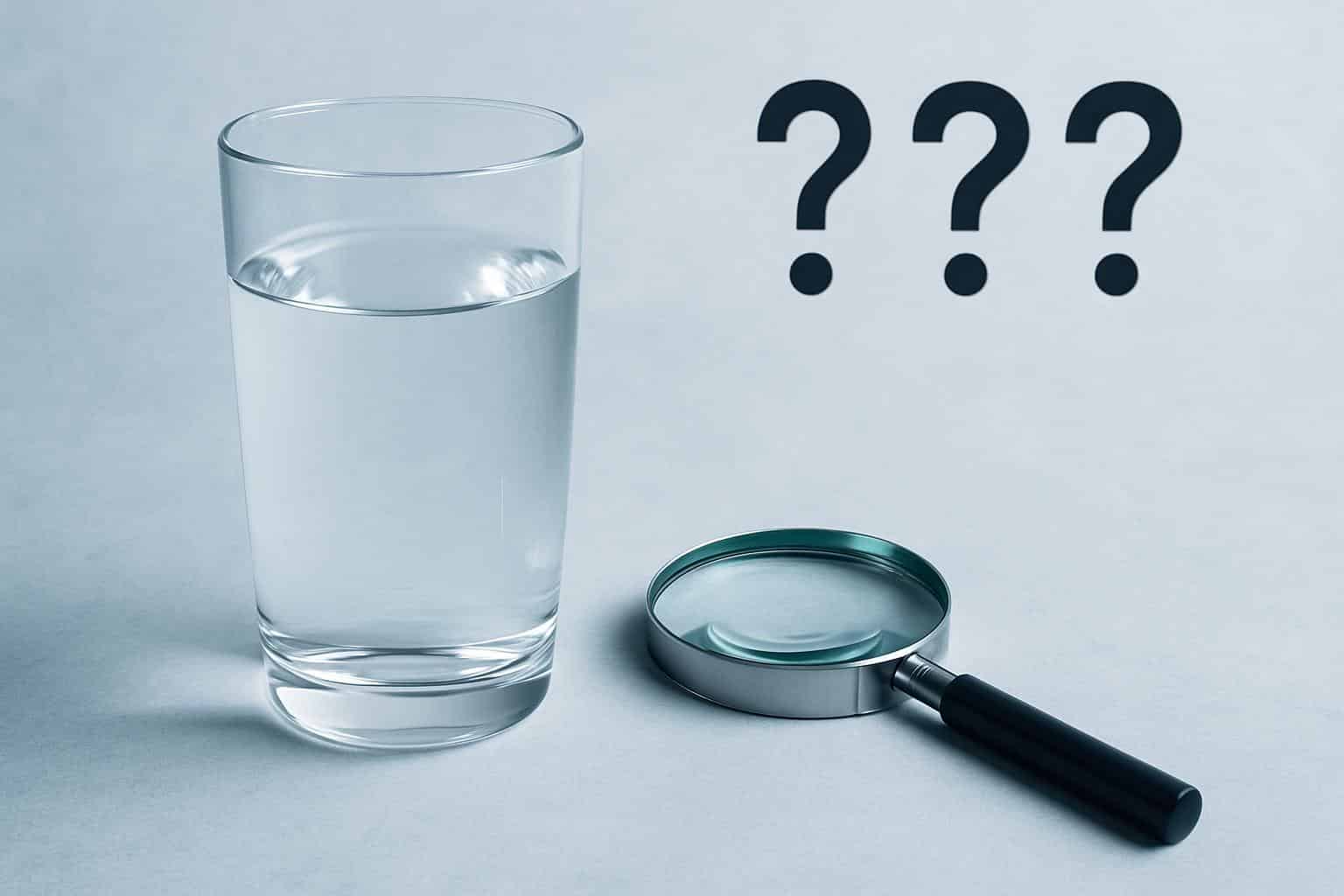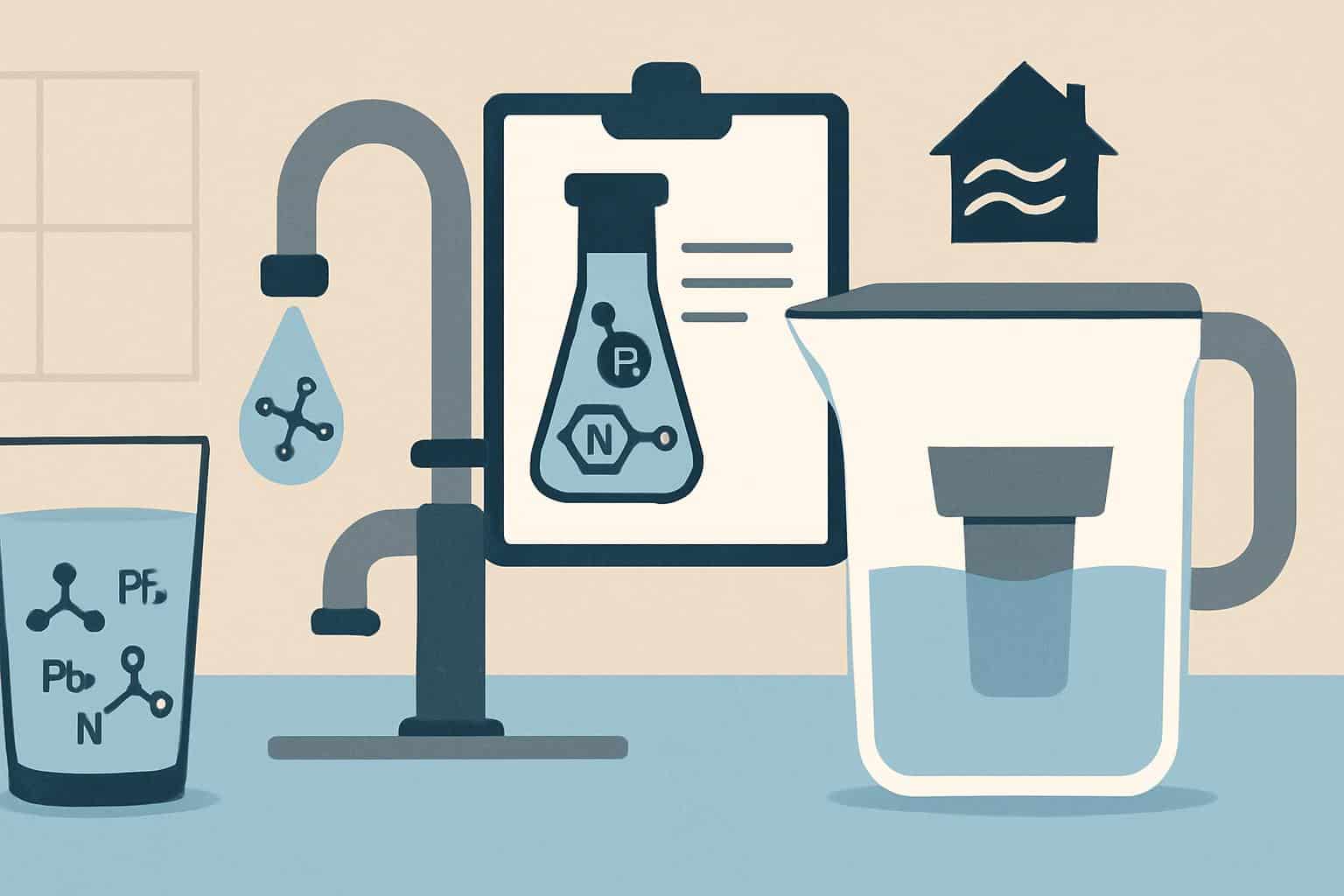If you’re depending on a pitcher to “clean up” your tap, you might be solving for taste at the expense of a bigger picture. From PFAS to lead to nitrates, the risks differ greatly depending on where you live — and how your water gets treated. These three questions will help you determine what’s in your water — and how to address it.
Question One: What’s in Your Water and How to Test
Start with data, not guesswork. If you are on a public system, read your utility’s Consumer Confidence Report, which the Environmental Protection Agency requires water suppliers to put out each year. It includes major contaminants and treatment techniques, as well as violations of the rules, but it may not list every new or emerging chemical of concern.

If you have a private well, there is no routine federal testing. The U.S. Geological Survey estimates tens of millions of Americans rely on private wells, and shallow, rural wells are more likely to have problems such as arsenic, manganese and nitrates. Health agencies advise testing at least once a year for bacteria and nitrates, and periodically for metals and other risks specific to your region.
PFAS are a perfect example of why testing is important. About 45 percent of U.S. tap water samples tested positive for PFAS in a USGS national study in 2023. In 2024, the E.P.A. ended up establishing enforceable limits for several PFAS, including 4 parts per trillion for PFOA and PFOS. That’s a reminder that “safe” is just another word for “extremely low.”
Don’t trust your senses alone. Water can appear and taste good, while bearing dissolved metal or microscopic pathogens. Look into certified mail-in kits, or use a state-certified laboratory. Request tests designed for the contaminant in question — E.P.A. Method 537.1, for instance, covers PFAS — and hold onto copies of results as a baseline from which to periodically cross-reference your tap water.
Question Two: How Do You Treat It Safely and Effectively
There are three buckets that treatment falls into. Conditioning alters water chemistry to protect plumbing and increase feel. Softeners lower hardness (calcium and magnesium) through ion exchange; neutralizers increase low pH to prevent the corrosion of copper and lead. Conditioning works your system, but it doesn’t remove impurities.
Filtration targets specific contaminants. Activated carbon removes chlorine, many disinfection byproducts, some pesticides and certain PFAS. Lead and arsenic can be addressed by specialty media and ion exchange resins. Find NSF/ANSI certifications that align with your objective — 53 for lead and other health contaminants, 42 for taste and odor, and 401 for specific emerging compounds.
Purification goes further. Reverse osmosis eliminates a broad variety of dissolved solids, including many PFAS, nitrates and metals. There are no chemicals used in UV disinfection, and microbes are not merely killed; NSF/ANSI Standard 55 addresses performance claims. These systems do need filter replacements, intermittent sanitization and (in the case of RO) a small amount of wastewater — think of it as the price for having bottled-quality water on tap.
A quick warning: boiling will not remove lead or PFAS and can also concentrate nitrates as water evaporates. Match the tool to the threat, and verify reduction claims through third-party certification or performance data issued by a reputable lab.

Question Three: Where Should You Treat Your Water
Point-of-use remedies are installed where you drink or cook — often under the kitchen sink. They are great for targeted risks and cost-effective upgrades. A small RO or a proven carbon block can be the most cost-effective way to add even more protection so you’re protected with every swallow.
Point-of-entry systems treat water before it enters your home, delivering quality water to every faucet and appliance.
- Whole-home sediment filters remove grit from pipes.
- Carbon tanks remove lots of chlorine and many volatile organic compounds around the house, making for better showers and protection of rubber seals.
- Softeners cut down on scale in fixtures and help increase water heater longevity.
There are certain exposures that happen in the shower, not just the glass. Chlorine, certain VOCs and radon can be inhaled; for those contaminants, a whole-home system is more protective than a filter on one faucet. For lead, the gold standard is taking out lead service lines. Until then, a certified point-of-use filter for drinking and cooking is a reasonable stopgap layer.
Turn Answers Into Next Steps for Safer Drinking Water
Rank by risk and use. If testing shows the presence of bacteria or spurs a boil-water notice, focus first on disinfection. For babies, pregnant people and individuals with compromised immunity, even if your utility meets standards, consider a point-of-use RO at the kitchen sink: added protection at the tap is low-cost peace of mind.
Verify products before you buy. Look for NSF/ANSI markings that correspond to your contaminant; request performance data for your local water chemistry. Verify maintenance costs and schedules — most filters are 6-12 months, RO membranes 2-5 years, media tanks every couple of years based on usage.
Use public resources. For specific guidance on testing and treatment, refer to your utility’s Consumer Confidence Report, state health department lab listings, and organizations like A.W.W.A. (American Water Works Association) and C.D.C. (the Centers for Disease Control and Prevention). Many utilities already post lead service line inventories, and some even offer replacement programs — so check with them before plunking down money on gear you may not end up needing.
The bottom line is simple. Ask what’s in your water, select the technology to help, and locate protection where it counts most. If you have a data-driven plan, you can graduate from guesswork to confidence — one glass at a time.

